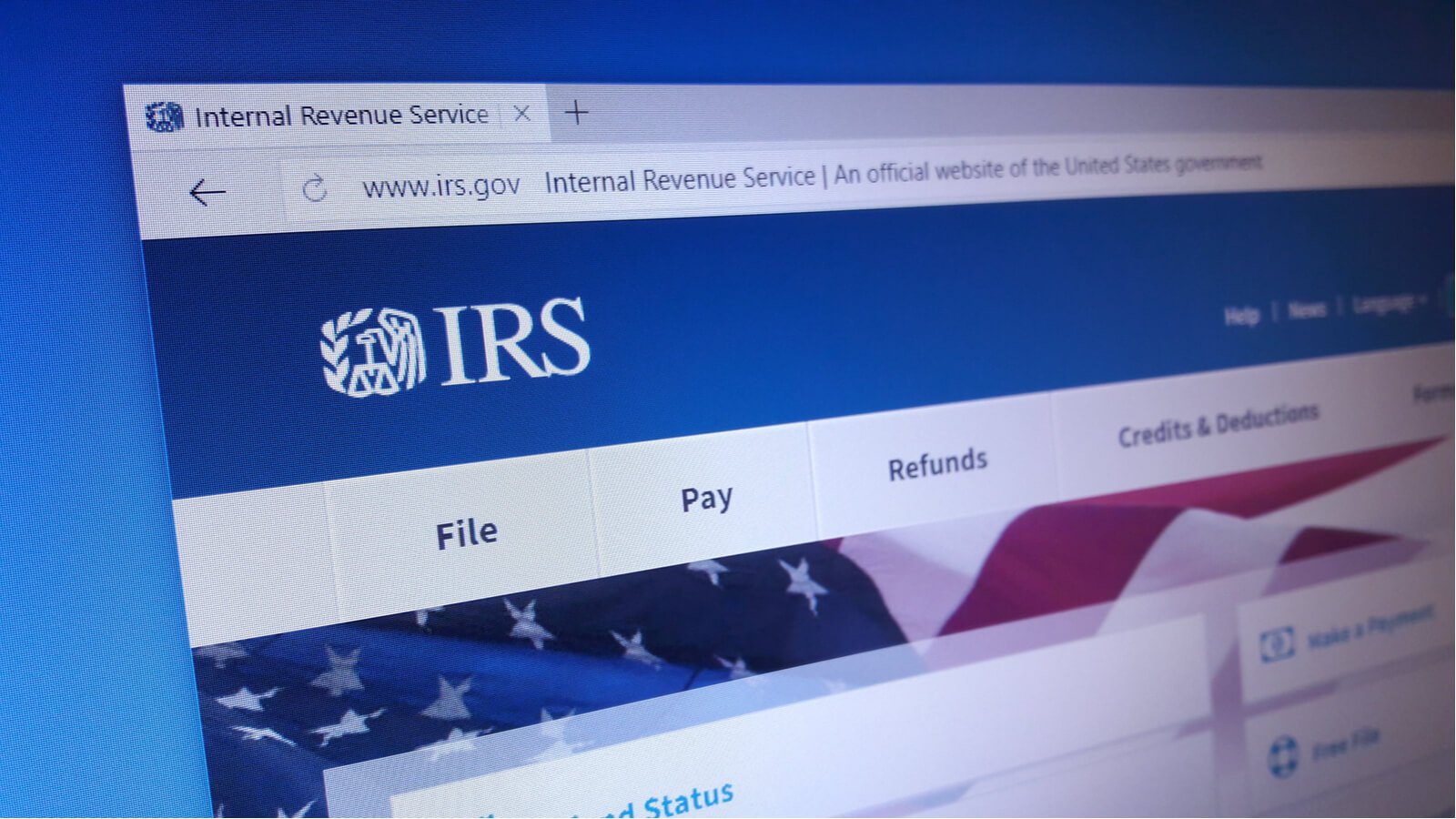Making a payment mistake with the IRS can feel like an ‘end of the world’ moment. During tax season, it’s easy to assign a payment to the wrong form or year or even mix up estimated payments with taxes due. These small mistakes can feel overwhelming, but the good news is that fixing them is simpler than you might think. The IRS has clear processes to help taxpayers correct payment issues so that you can resolve these efficiently with the right steps.
While addressing payment mistakes as soon as possible is crucial, remember that the IRS routinely deals with these types of corrections from taxpayers. Taking immediate action helps avoid potential penalties, fees, and interest charges. In many cases, payment errors can be resolved through your IRS online account or by contacting the IRS directly, depending on the issue.
At DiMercurio Advisors, we've helped countless clients navigate IRS payment corrections, offering the tools and guidance they need to resolve issues confidently. Let's break everything down so you can tackle this head-on.
How can I confirm a payment mistake with the IRS?
Before figuring out how to fix your payment mistake, it’s important to figure out exactly what went wrong with your payment in the first place. Understanding the issue upfront helps you pinpoint the problem and choose the best way to fix it. The easiest way to check this is through your IRS online account. If you don’t already have an account, our IRS account guide can help you get started.
Once logged in, carefully review your Payment Activity by paying attention to several key details:
- Payment amounts and dates
- Which tax year received the credit
- What form was the payment allocated to
- Whether it's marked as estimated payment or balance payment
- The payment method used (Direct Pay, EFTPS, etc.)
Cross-reference these details with your bank statements to ensure everything matches. Look for:
- The exact payment amount
- The date the payment cleared your bank
- Any reference numbers associated with the payment
- The payment recipient information


What should I do if I allocated the payment to the wrong tax year?
Allocating a payment to the wrong tax year is one of the most common mistakes a taxpayer can make, especially during tax season. The first step is to verify the payment date and check which tax year received the credit. This information appears in your IRS account under payment history.
To fix a wrong tax year allocation, follow these specific steps:
- Log into your IRS online account immediately
- Locate the misallocated payment details, including:
- Payment date
- Amount
- Confirmation number
- Current tax year allocation
- You can request a reallocation to the correct tax year through IRS Direct Pay or by contacting the IRS. It’s worth noting that this feature may only be available for scheduled payments. All others will need to call the IRS to resolve the issue.
- Document your correction request with screenshots
- Save any confirmation numbers for the adjustment
Sometimes, online correction is only available for payments for a certain period. In these cases, you'll need to contact the IRS directly. Before calling:
- Gather all payment documentation
- Note down the correct tax year
- Have your tax ID number ready
- Prepare to verify your identity
How do I address a payment allocated to the wrong tax form?
It's easy to accidentally send a payment to the wrong tax form, especially if you're filing multiple returns. For instance, a business owner might mistakenly apply a payment to their Form 1040 instead of a business return like Forms 1120 or 941, or vice versa. Here’s how you can address this:
Start by reviewing the affected tax forms carefully:
- Check which form received the payment
- Verify which form should have received it
- Document both form numbers and tax periods
- Note any corresponding schedules or attachments
The correction process involves:
- Accessing your IRS account
- Locating the specific payment
- Using online tools when available to request reallocation
- Following up within 30 days if no change appears
It's important to address this with your CPA (for proper handling) or the IRS as soon as possible. Allocating a payment to the wrong form can lead to automated notices or penalties for the form that should have received the payment. If you receive a notice, don't panic, as it's often a simple fix. Make sure to keep detailed records of your correction request, including:
- Dates of communications
- Payment details (amount, date, and confirmation number)
- The correct form and period it should apply to
- Any correspondence or notices from the IRS
Examples of Common IRS Payment Mistakes
Even small payment mistakes can lead to major headaches with the IRS. Here are two common scenarios and how to fix them:
Example 1: Payment Applied to the Wrong Tax Year
If you meant to pay your 2024 taxes due but accidentally applied the payment as a 2025 estimated tax payment, the IRS will credit the wrong tax year. This could leave your 2024 balance unpaid, potentially leading to penalties and interest.
How to Fix It:
- Log into your IRS online account and check which tax year the payment was applied to.
- Verify the payment type (e.g., "Estimated Tax Payment" vs. "Tax Due Payment").
- Request a correction:
- If the payment was made recently, check if IRS Direct Pay allows modifications.
- If the payment cannot be reallocated through your IRS online account, calling the IRS should be your next step. An IRS representative can transfer the payment to the correct tax year or form while maintaining the original payment date, which helps prevent unnecessary penalties and interest. Filing Form 843 should be a last resort, as refunds do not retain the original payment date, which could lead to additional charges.
- Document the request and save any confirmation numbers.
Example 2: Payment Made Under the Secondary Taxpayer’s SSN
For joint tax returns, the IRS assigns payments to the primary taxpayer—the person listed first on the tax return. If a spouse (secondary taxpayer) makes a payment under their own SSN, the IRS may record the payment but fail to apply it to the tax return, leaving the balance unpaid.
How to Fix It:
- Log into the IRS online account for both taxpayers to confirm where the payment is recorded.
- If the payment is linked to the secondary taxpayer’s SSN, call the IRS to request a manual transfer to the primary taxpayer’s account.
- Monitor your IRS account to ensure the payment is applied correctly.
| 💡Best Practice: Always use the primary taxpayer's SSN, which belongs to the first person listed on the tax return, when making payments to ensure they are applied properly. |
Can different payment mistakes be fixed the same way?
The good news is that many IRS payment mistakes share similar correction steps, which can simplify the resolution process. While each situation has unique details, understanding the common elements of these fixes can save you time and effort.
Here’s what most corrections have in common:
- Start with Verification:
- Review your IRS account to confirm the payment details.
- Identify the issue, such as a misallocated payment or incorrect tax year.
- Document the problem, including payment dates and confirmation numbers.
- Use Standard Tools for Corrections:
- Adjust payments through IRS Direct Pay if the option is available.
- Make updates to your IRS online account.
- For more complex errors, contact the IRS directly to request a correction.
- Keep the Necessary Documentation:
- Payment details, including the amount, date, and method.
- Tax identification information.
- Proof of the original payment, such as bank statements or IRS confirmation emails.
- A clear explanation of the error and your correction request.
How can I use my online IRS account to check my balance and identify mistakes?
Your IRS online account is a powerful tool for monitoring tax payments and catching errors early. Regular account monitoring can prevent common payment mistakes and help you spot issues before they become problems. For additional tips on setting up and using your IRS online account effectively, we recommend you check out this article next: IRS Direct Pay.
Key Benefits of Your IRS Account
With an online IRS account, you can:
- Access real-time payment information 24/7.
- View detailed transaction histories.
- Download account transcripts on demand.
- Use payment verification tools.
- Make corrections directly when needed.
Tips for Making the Most of Your IRS Account
To get the most out of this tool and avoid future issues, follow these tips for using your account effectively:
- After Every Payment:
- Verify the correct tax year.
- Confirm the payment was allocated to the right form.
- Check the payment’s designation (e.g., estimated or tax due).
- Review the processed amount for accuracy.
- Save all confirmation details.
- Regularly Review Account Transcripts:
- Download and save copies for your records.
- Check for accurate payment applications.
- Monitor updates to your balance.
- Look for any adjustments or corrections.
- Track the status of pending corrections.
- Use Account Features Wisely:
- Set up payment reminders to avoid missing deadlines.
- Save payment confirmations for future reference.
- Track any IRS correspondence.
- Keep an eye on notice updates.
- Document any account changes you make.
The bottom line
At DiMercurio Advisors, we believe in taking a red-carpet approach to meeting each client's unique needs. Whether you're facing IRS payment corrections or planning for the future, our team is here to guide you every step of the way.
Discovering an IRS payment mistake can feel unsettling, but straightforward solutions are within reach. Taking prompt, informed action is key. Keep these essentials in mind:
- Regularly check your IRS account and monitor allocations.
- Save confirmation numbers and document correction requests.
- Double-check details before submitting and use IRS Direct Pay carefully.
- Keep detailed records and set up payment reminders.
Even tax professionals occasionally misallocate payments; it's how quickly and effectively you address the issue that matters most.
Let us help you turn that payment slip-up into a valuable lesson. With extensive experience in tax advisory services, DiMercurio Advisors will ensure your corrections are hassle-free and straightforward so you can put your IRS troubles in the rearview mirror.








